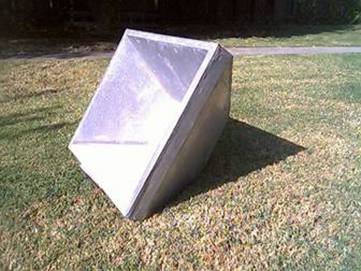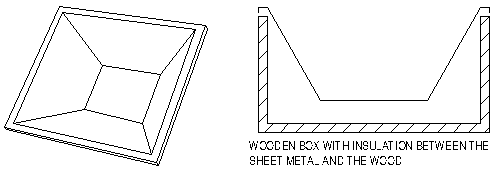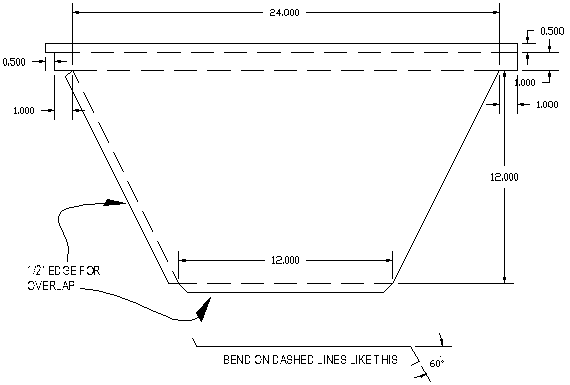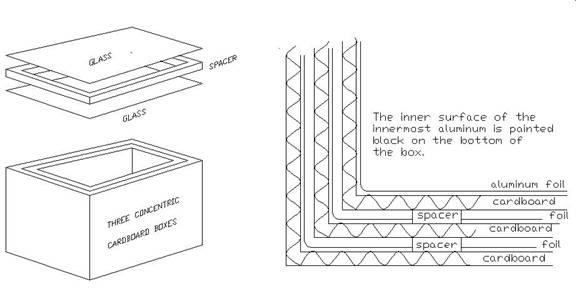
Solar Cookers

The food to be cooked is placed in a dark enameled pot, and the face is covered by a double layer of glass (you can barely see a support for this glass extending outward from the bottom of the
ven). This photo shows both inner and outer sheet metal shells, but a more practical application for a broader spectrum of economic conditions would use the inner shell alone, mounted in an insulated wooden box.

The pattern shown below was used to create the unit in the above photo. You will need four similar pieces plus a bottom to build this solar cooker. Rather than measure everything four times, measure and cut out the first one very precisely, and use it as a pattern for the others. I chose to make four pieces in addition to the pattern, and to save the pattern so I could make more stoves.
The size of the box can be changed without changing the depth by sliding the pattern sideways. I reduced the size of the one in the photo by positioning the pattern on the two side pieces to produce a 9” X 12” bottom.
The half-inch wide edges are bent as needed and joined to adjacent pieces by pop-rivets or sheet-metal screws. The joints are then sealed with either clear silicone caulking or solder.
o
Two-Gallon solar heater
I did an experiment for a couple of weeks, where I bathed with no more than two gallons of scalding water (diluted with cold water as required of course). The technique was to use warm suds in a pool about an inch deep in the bottom of the tub.
I was surprised that I was able to get a very thorough bath and rinse, and still have hot water left over. The real value of this experiment was that I was heating the water in a cardboard box!
The contraption was basically three layers of foil-lined cardboard, with a double layer of glass over it. Don’t underestimate the value of the foil. Although totally lacking in insulating value, shiny aluminum reflects infrared radiation. Considering that thermal radiation increases with the fourth power of the absolute temperature, this loss can be significant.

The water was heated in a couple of black-painted gallon milk jugs. They were resting on a shallow sheet-metal pan also painted black. With this cheap simple arrangement, water would still be too hot to use directly for some time after sunset.
When I returned to a more "civilized" bathing pattern, I began using it as a solar cooker, and found nothing I couldn't "crock-pot" during the course of a day. These challenges included beans, and even baked potatoes. For proper cooking, the food needs to be in a dark container. The cheap black or dark blue enameled cookware common to supermarkets and second-world countries is ideal.
In all fairness, I need to add that most of these experiments took place during the summer time, but the potential for year-round usage is obviously there.
Another important detail is that it must either be propped at an angle so the sun can shine directly into it on its path, or set up with some kind of a reflector.